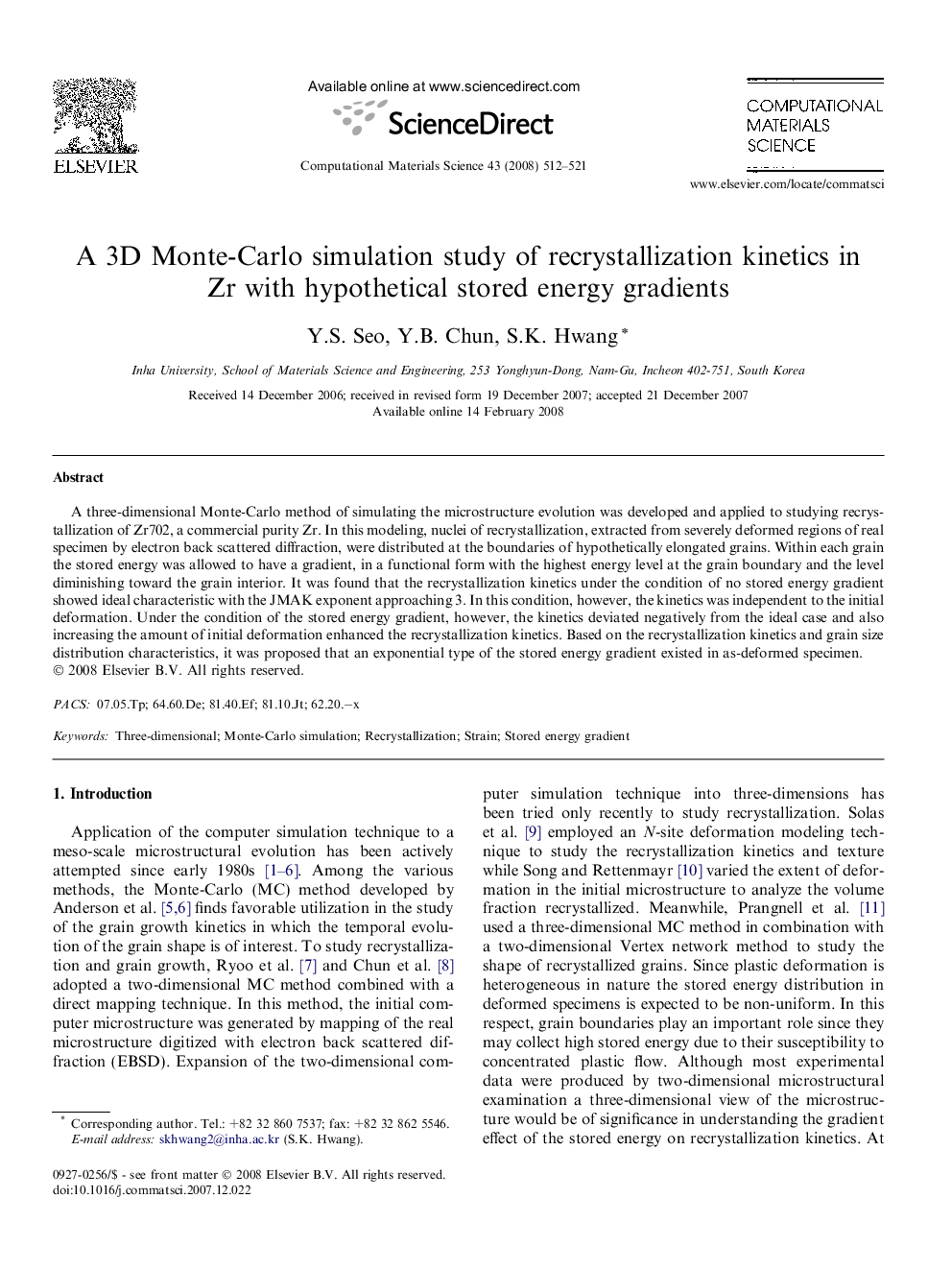| Article ID | Journal | Published Year | Pages | File Type |
|---|---|---|---|---|
| 1563455 | Computational Materials Science | 2008 | 10 Pages |
Abstract
A three-dimensional Monte-Carlo method of simulating the microstructure evolution was developed and applied to studying recrystallization of Zr702, a commercial purity Zr. In this modeling, nuclei of recrystallization, extracted from severely deformed regions of real specimen by electron back scattered diffraction, were distributed at the boundaries of hypothetically elongated grains. Within each grain the stored energy was allowed to have a gradient, in a functional form with the highest energy level at the grain boundary and the level diminishing toward the grain interior. It was found that the recrystallization kinetics under the condition of no stored energy gradient showed ideal characteristic with the JMAK exponent approaching 3. In this condition, however, the kinetics was independent to the initial deformation. Under the condition of the stored energy gradient, however, the kinetics deviated negatively from the ideal case and also increasing the amount of initial deformation enhanced the recrystallization kinetics. Based on the recrystallization kinetics and grain size distribution characteristics, it was proposed that an exponential type of the stored energy gradient existed in as-deformed specimen.
Keywords
Related Topics
Physical Sciences and Engineering
Engineering
Computational Mechanics
Authors
Y.S. Seo, Y.B. Chun, S.K. Hwang,
